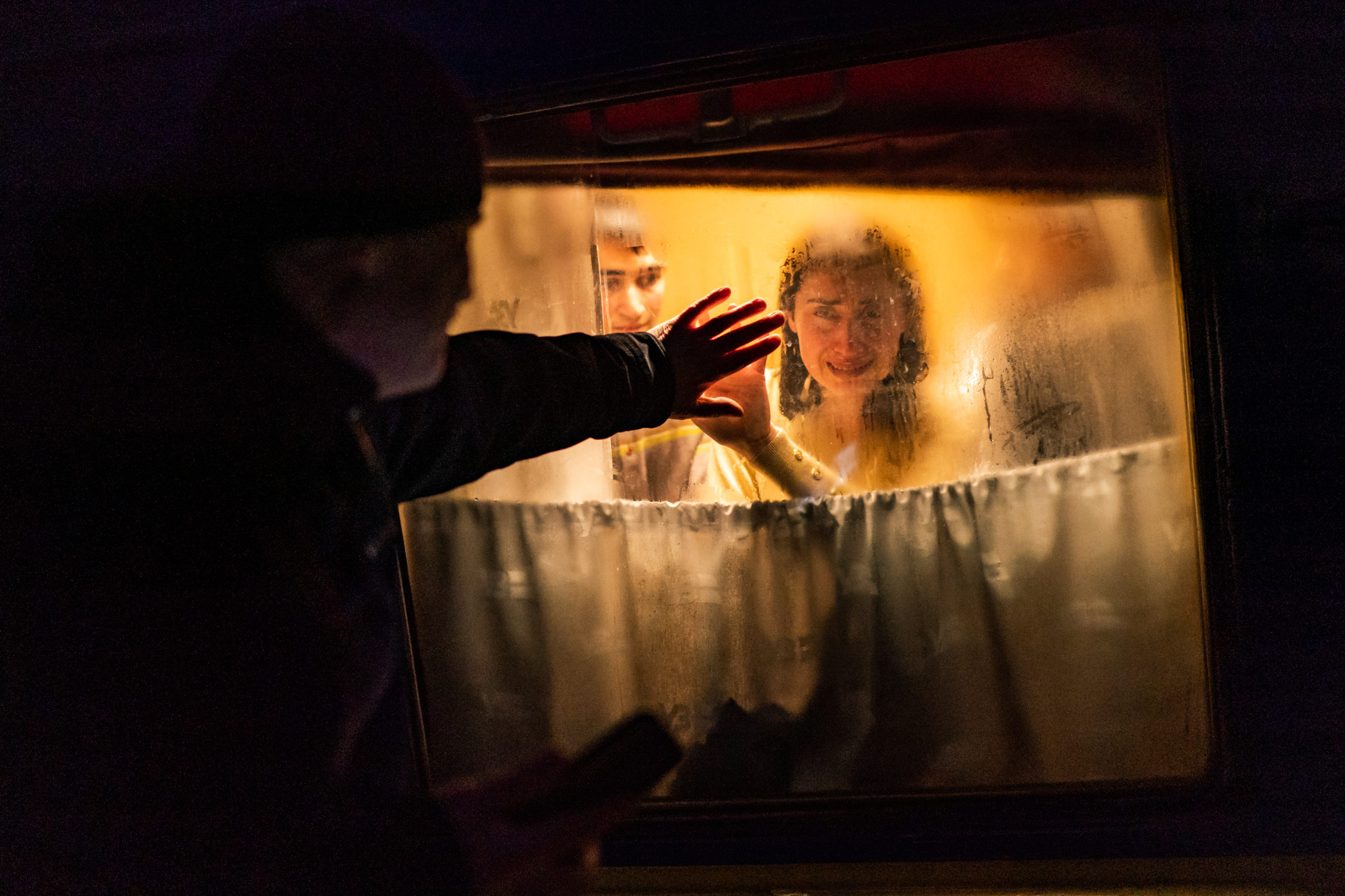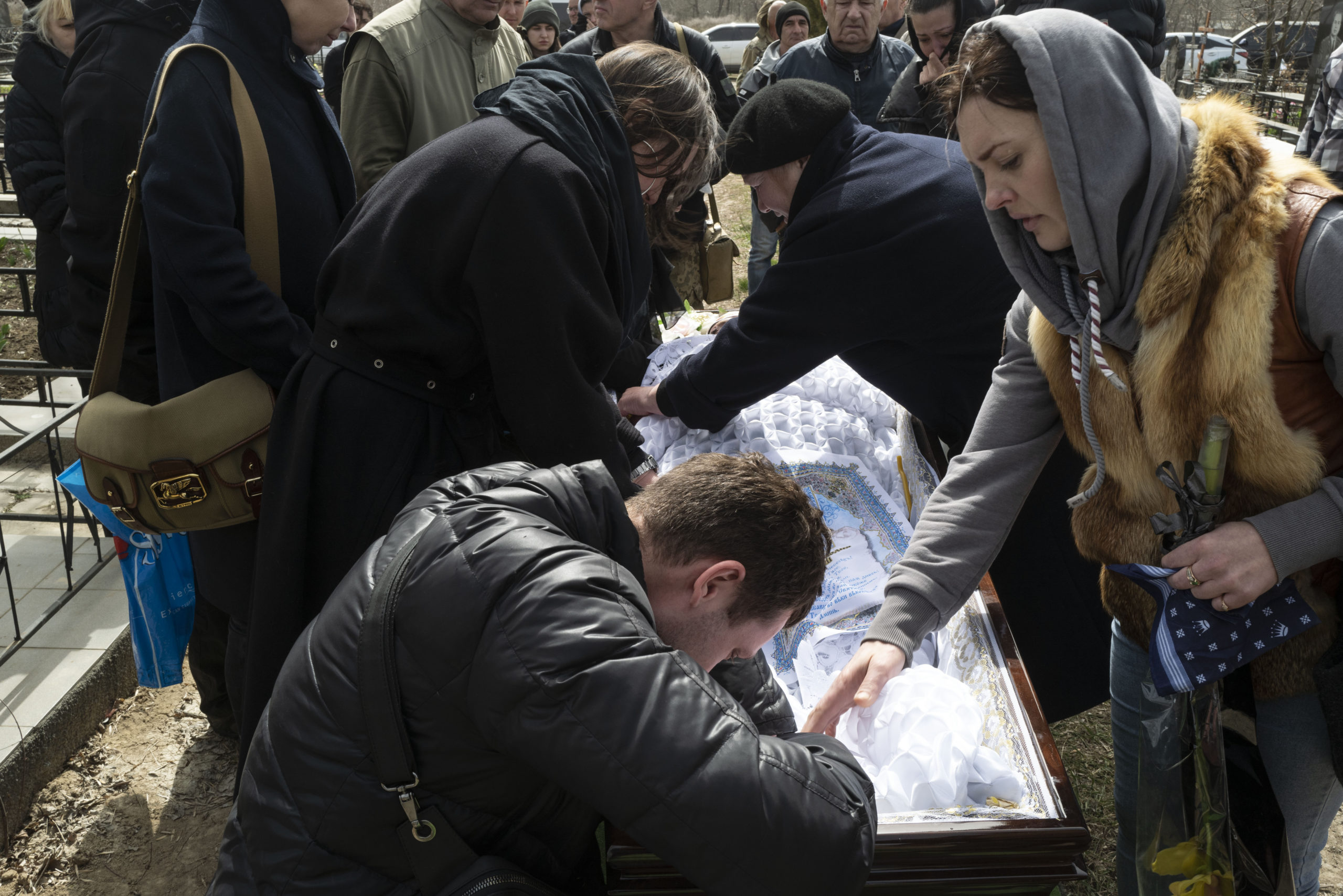As a photography editor at The Washington Post, evaluating whether to publish images of death and destruction can be part of my daily responsibilities. I am currently managing our photo coverage of the unprovoked war in Ukraine, overseeing at least three full time photographers in the field since the invasion began on Feb. 24. Issues surrounding images of violence and trauma are more prevalent than ever before in my career.
As the Russians have retreated from parts of Ukraine, journalists’ access to the sites of apparent atrocities have resulted in a flow of especially gruesome scenes, many of which I must review and consider from my desk: body bags (closed and opened); murdered civilians, burned, their hands bound, some dismembered; survivors utterly broken by grief.
Related Reading
Covering the War in Ukraine: “The Putin Regime Doesn’t Want Eyewitnesses”
By Katerina Sergatskova
How Newsrooms Handle Graphic Images of Violence
By Helen Lewis
There are layers to bearing witness, from the victims experiencing this war firsthand and our journalists in the field, to the publication editors and finally to readers like you. It is a journalist’s duty to report back to editors, but it is up to the editors to decide what might be too much for the public that consumes newspaper content. What do readers need to see to understand the reality of war without our coverage being gratuitous?
It is essential to remember that Ukrainians are allowing journalists into their devastated communities not only to document, but to follow through and publish the harsh truths of this — or any — war. And as an editor, I have a responsibility to consider the importance of when and how to publish these images, to bring the work of the photographers in the field to fruition. There are ways to be mindful of the line between publishing important images and being shocking. The public needs to be aware that people — civilians and military — are dying in this war. Do they need to see identifiable faces of these people? Not usually.
Heidi Levine, a seasoned war photographer who has been on assignment for The Post since the first week of the invasion, recently wrote a piece about her work in Bucha, a Ukrainian city devastated by intense fighting. “It was a scene that I knew had to be documented for evidence, but I worried that my images were too graphic for publication,” Levine wrote. “I was relieved that The Washington Post did publish my shocking photographs.”
The photos she’s making are disturbing, but they are powerful evidence as to the conduct of combatants in war. Levine’s images not only provided evidence of atrocities committed by the Russians against the Ukrainian people, but they’ve also shown how Russians are dying in the war, too. Such photographs can challenge state propaganda. Moscow correspondent Isabelle Khurshudyan, who has been based in Ukraine since before the invasion, shared some these images on her personal Instagram because she wants her Russian friends to bear witness to them.
“The information Russians are seeing is incredibly censored,” Khurshudyan wrote to me. “If they search ‘Bucha’ on a Russian search engine, they won’t see images of dead bodies. They’ll see photos of pre-war Bucha. But a lot of Russians, especially young people, are using VPNs for Instagram and other social media. In the case of my friends who still follow me on Instagram, I want them to see those graphic images so this feels real for them, too. So, they see it’s not fake, as their government claims. So, they feel some responsibility for what their country is doing.”
But, what makes an image graphic goes beyond the presence of death in the frame. The anguished look on a survivor’s face or the suggestion of torture through visual cues or even information in the caption can cause the audience to have a visceral reaction.
There are a number of considerations that have to be taken into account before a photograph is published. If faces of the dead can be seen, have they already been identified? Is there a risk that family members will learn of their loved ones’ passing because the image is published? If the photo shows someone who is wounded, do we know if they survived? These are questions an editor must try to answer. (To be clear, the way society approaches video and stills on social media is different than how professional journalists go about deciding what makes sense to publish.)

Once we choose to publish a difficult image, the craft of photo editing employs basic principles that we can apply to each subsequent decision. Is the photograph running online only? If so, we can place the image below the top of the story, use a different image when the story is shared on social media, and add a warning of graphic content to the top of the article, which gives viewers the choice to view it or not? I see this more and more — even on social media, where professional photographers act as their own editors and will use graphic image warnings in their galleries.
Print cannot offer such agency to readers. A photograph on a front page, or even on inside pages, cannot be swiped past. We can, however, consider basic tools such as size or color vs. black and white (which can mitigate the shock of blood) to give an image a place in print without overwhelming readers.
Even when taking all of these steps, the audience may feel a photograph goes too far. And, government censorship of war photography is not new — three decades ago, the Pentagon banned media coverage of the coffins brought to Dover Air Force Base in Delaware — nor is the effort by news organizations to fight such censorship and justify the publication of graphic images to their readership.
In 1943, LIFE magazine advocated to U.S. government censors to publish images of dead soldiers from Buna Beach, taken by photographer George Strock, because the public had grown complacent about the war. LIFE explained the decision to publish the image to their readership after months of making their case to the government:
Here lie three Americans.
What shall we say of them? Shall we say that this is a noble sight? Shall we say that this is a fine thing, that they should give their lives for their country?
Or shall we say that this is too horrible to look at?
Why print this picture, anyway, of three American boys dead upon an alien shore? Is it to hurt people? To be morbid?
Those are not the reasons.
The reason is that words are never enough. The eye sees. The mind knows. The heart feels. But the words do not exist to make us see, or know, or feel what it is like, what actually happens. The words are never right.
Those words ring true today. As the war stretches on, each day I check in with myself to ask, am I becoming visually anesthetized to images of horror? Does my standard for what is publishable inch lower because of the volume of suffering I am filtering?
I deeply value collaborative decision making — not only with my visual colleagues but also with those who do not work on the scenes of the war every day. A whole chain of command of seasoned editors and managers evaluate the most gruesome images and spend hours weighing these decisions, so the burden doesn’t just fall on me.
Sometimes it is not a photo of the dead that gives me pause.
A wretched reality is that the memorable images of this conflict do not always have to include literal images of death to haunt viewers. Levine’s photos captured the horrors of Bucha, but also Salwan George’s photograph of a couple having a painful goodbye at the train station in Odessa, Michael Robinson Chavez’ frame of a devasted woman in front of her shattered home in Mykolaiv, and Wojciech Grzedzinki’s moment of a limp, wounded child being rushed through a hospital after a bombing at the train station in Kramatorsk.
Through still images, I am haunted — and perhaps our readers are as well. In this way, we share a collective experience, develop empathy, and together, we face the reality that is this war.



